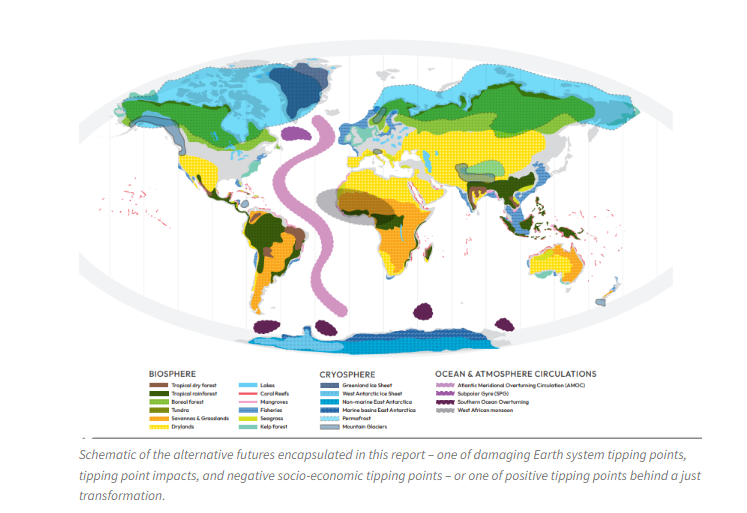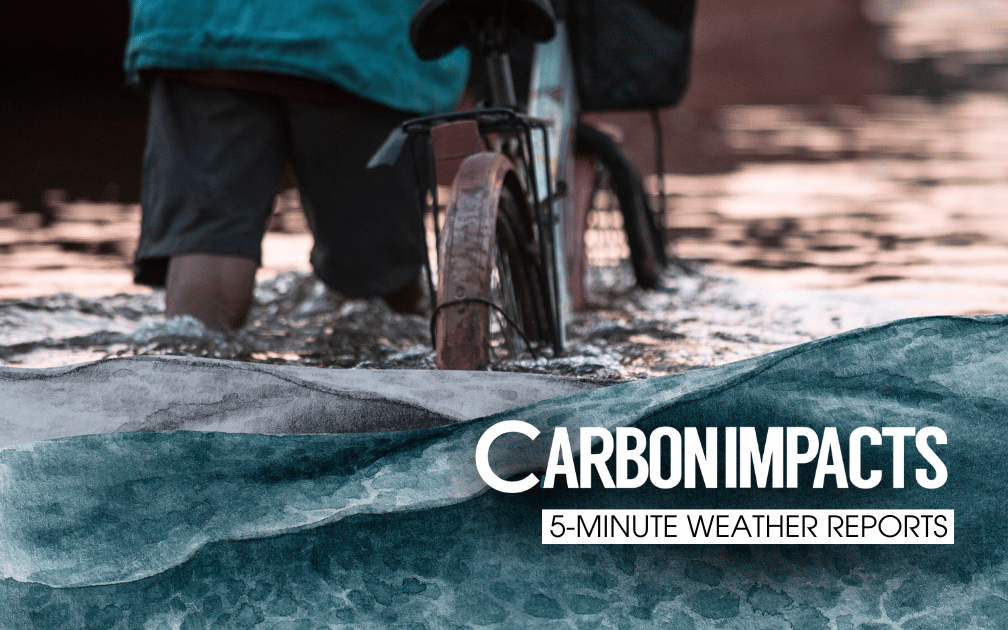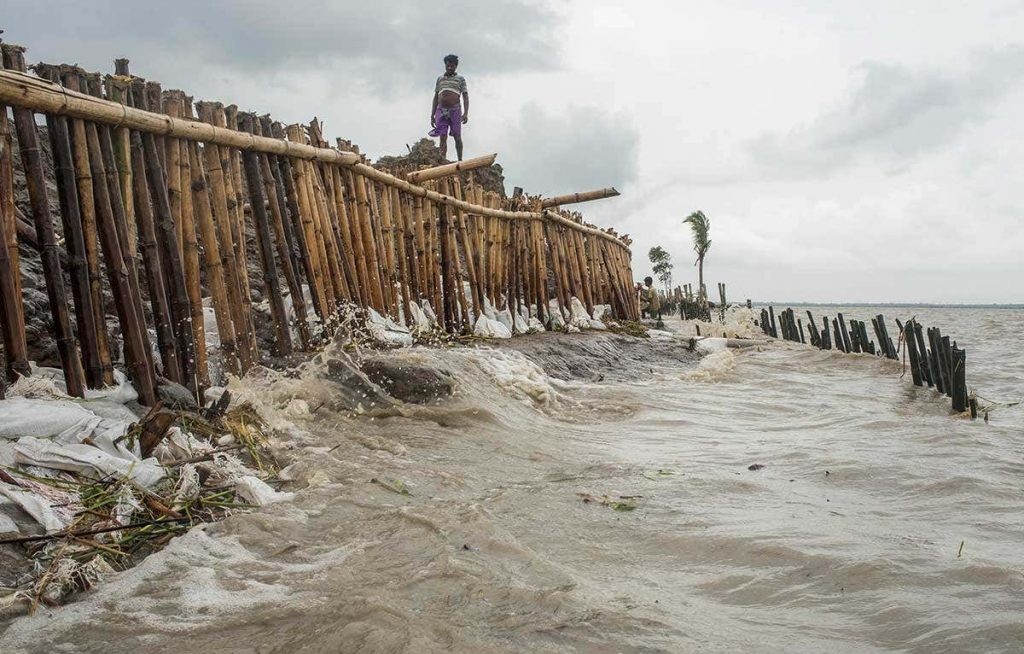Warming world on track to trigger dangerous tipping points by 2030, disrupt social cohesion: Report
The report says that escalating Earth system destabilisation threatened to disrupt societal cohesion, increase mental disorders and amplify radicalisation and polarisation
By Editorial Desk / Dec 11, 2023

Image Courtesy: Paul Souders
As fossil fuel economies threaten to breach the 1.5°C by 2030, the world is at a pivotal moment to trigger damaging tipping points over the next decade, which could lead to a domino effect of other disastrous events, according to the Global Tipping Points report released this week. A tipping point occurs when a small change sparks an often rapid and irreversible transformation, and the effects can be positive or negative.
The report based on palaeoclimate records, observations, theory and complex computer models analyses 26 potential negative Earth system tipping points. Five major tipping points are already at risk of being crossed due to warming right now and as 1.5°C is breached by around 2030. The stability of three more earth systems begin to be at risk, the report stated.

Negative tipping points: Domino effect, unmanageable social damage
The most comprehensive assessment of tipping points ever conducted by 200 scientists stated that tipping points previously considered to be high-impact, low-likelihood events are becoming “high-impact, high-likelihood events”. The damage they cause will then cascade through societies around the world.
Negative tipping points are likely to be immense. The domino effect can result in unmanageable damage. For example, the report pointed out that the collapse of the Atlantic Ocean’s great overturning circulation combined with global warming— just one risk—could cause half of the global area for growing wheat and maize to be lost.
Moving on to the social impacts, the report said that escalating Earth system destabilisation threatened to disrupt societal cohesion, increase mental disorders and amplify radicalisation and polarisation. It has the potential to escalate violent conflicts, mass displacement and financial instability.
If societies fail to re-stabilise the Earth system, we will not stay in a business-as-usual state, the report warned. Instead, negative social tipping will bring about another social system state, likely characterised by greater authoritarianism, hostility, discord and alienation.
Positive tipping points also have positive domino effect
The report said without urgent action societies will be overwhelmed, but emergency global action can harness positive tipping points and steer us towards a sustainable future. Bold, coordinated policies could trigger positive tipping points across the energy, transport, and food sector. A cascade of positive tipping points would save trillions of dollars in climate-related damage, and begin restoring the natural world upon which we all depend.
The report also found that ‘positive’ tipping point dynamics also exist in societies, where desirable changes become self-propelling—for example in the recent expansion of renewable energy. Positive tipping points interact and one can trigger others, helping mitigate against the climate breakdown. But this requires decision makers to take action, the report stated.
‘Net zero by 2050 not enough, need transformative governance response’
The report said that reaching net zero by the middle of the century will not prevent this happening— governments need to phase out fossil fuels and land-use emissions now. The climate and ecological crisis is far more severe than is commonly understood, the researchers said, adding that these changes could overwhelm societies as the natural world rapidly comes apart, without a transformative governance response from decisionmakers.
Based on an assessment of 26 negative Earth system tipping points, the report concluded “business as usual” is no longer possible.
Scientists have listed the systems already at risk from warming right now (1.2°C above pre-industrial levels), including Greenland ice sheet, West Antarctic ice sheets, warm-water coral reefs, North Atlantic subpolar gyre circulation, and permafrost regions. Those at risk as the world exceeds 1.5°C global warming include boreal forest, mangroves and seagrass meadows, while those at risk at 2°C global warming and beyond include Amazon rainforest, subglacial regions in East Antarctica Greenland and West Antarctic ice sheets.
Let’s look at some examples of different tipping points explored in the Global Tipping Points below.
In focus: Coral reefs, ice sheets, and mangroves
The report explored where localised coral reef collapse could aggregate to the scale of regions, potentially irreversibly, and potentially to a global scale. Warm-water coral reefs span the Earth’s tropical and subtropical ocean, and are estimated to support over half a billion people for their livelihoods and over a quarter of marine species for part of their lifecycle. Threats such as ocean acidification, overfishing, pollution, invertebrate predators and sea level rise, interact with the chances of thermal bleaching and increase the chance of collapse. The report concluded that at today’s 1.2°C global warming, tipping of warm-water coral reefs is ‘likely’, which becomes “very” once 1.5°C of global warming is passed.
Most of Earth’s freshwater is stored in the ice sheets of Greenland and Antarctica, representing by far the largest potential sources for sea-level rise under ongoing and future warming. With about 1.2°C of global warming compared to pre-industrial levels, the report concluded that we are getting dangerously close to the temperature thresholds of some major tipping points for the ice sheets of Greenland and West Antarctica. With the current trajectory of greenhouse gas (GHG) emissions and subsequent anthropogenic climate change, such largely irreversible changes might already have been triggered.
Mangroves are vital for coastal communities across the world, sustaining fisheries, recycling nutrients in the environment, and protecting coastlines from erosion. They are also among the most dense carbon sinks on Earth. Yet, living on the border between the sea and the land, mangroves are exposed to a double whammy of climate-related risks, such as deforestation, warming ocean waters, and invasive species. The latest IPCC report noted that, even under scenarios with no or limited overshoot of 1.5C, mangroves are “expected to be unable to keep up with sea level rise by 2050, with ecological impacts escalating rapidly beyond 2050.”
So far, scientists are seeing signs of these ecosystems losing resilience in some subtropical regions, as they are facing more frequent and intense marine heatwaves as well as other weather extremes. The new report said that researchers expect tipping signals from mangroves to emerge in some regions by 2080 if the world passes temperature thresholds between 1.5°C and 2°C (which could happen before 2080 without meaningful climate action). The more vulnerable regions such as the Middle East, Central America, the Caribbean, small islands, and northern Australia will likely see them sooner than the Indo-Pacific, South America, or parts of theIndian Ocean.
Key recommendations to consider
The report recommended strengthening adaptation and “loss and damage” governance, and recognising inequality between and within nations. It said that including tipping points in the Global Stocktake and Nationally Determined Contributions will coordinate policy efforts to trigger positive tipping points. And to deepen knowledge of tipping points, the research team supported calls for an IPCC Special Report on tipping points.
The article was originally published in CarbonCopy


